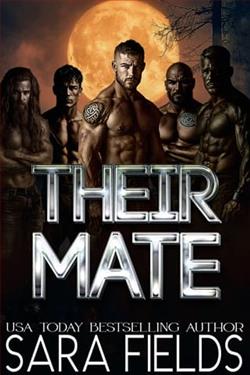Page 6 of Forsaken
"Has to be," Martinez confirmed. "We're checking local suppliers, but..." She shrugged, letting the sentence hang. They all knew how these searches usually went—too many possibilities, too few concrete leads.
Standing, Morgan walked the length of the dock, letting the scene play out in her mind. The wooden planks creaked beneath her feet, each sound echoing across the water. The killer would have needed time, privacy, and enough strength to manipulate a struggling victim. The ritualistic elements—the flowers, the positioning—suggested planning, possibly rehearsal. Nothing about this felt impulsive or amateur.
A splash in the distance drew her attention. A fish breaking the surface, or perhaps just debris carried by the current. The river kept its secrets well. But unlike the river, crime scenes eventually gave up their truths. You just had to know how to read them.
"Detective," she called, pointing to a section of railing. "Was this damaged during the struggle?"
Martinez joined her, squinting at the worn wood. Strands of her dark hair escaped her ponytail, dancing in the breeze. "Don't think so. Why?"
"Because it's not damaged—it's worn." Morgan ran her gloved finger along the groove. The indentation was smooth, polished by repeated use. "Someone's tied rope here before. Multiple times, probably."
Derik's eyes narrowed as he examined the mark, his investigator's instincts sharpening. "You think he's used this location for practice?"
"Or for previous victims we haven't found yet," Morgan said grimly. The river could hide a lot of sins, as she well knew. She turned to Martinez. "We need Laura's body processed as quickly as possible. Full autopsy, complete toxicology panel. And I want to review Emily Whitmore's autopsy results, talk to the coroner who dealt with her scene. We need to send Laura to the same coroner to help us connect these two crimes.”
Morgan felt the pieces starting to align in her mind, a pattern emerging from chaos. The staged scenes, the ritualistic elements, the calculated risk of appearing in public—this wasn't just about killing. This was performance art, meant for an audience. She thought of her own frame-up, how carefully it had been orchestrated, how every piece had been positioned for maximum effect.
"Detective Martinez," she said, turning back to the dock. A gust of wind carried the scent of river water and decaying leaves. "I need everything you have on Emily Whitmore's crime scene. And we need to talk to the medical examiner who handled her autopsy before they start processing Laura."
Martinez nodded, already pulling out her phone. "I'll call ahead, let them know you're coming."
As they walked back to their vehicle, Derik's hand brushed Morgan's arm—a subtle gesture of support that spoke volumes. His touch was warm through her jacket sleeve, a reminder that not everything good in her life had been lost during those ten years inside. "You're thinking there are more victims we haven't found."
"The worn rope marks, the complexity of the staging—this isn't his first performance." Morgan paused at their car, looking back at the river. The morning sun had burned away some of the mist, but shadows still clung to the water's surface like secrets waiting to be revealed. "He's been practicing, perfecting his technique. The question is, how long has he been rehearsing?"
"And who's his intended audience?" Derik added, sliding behind the wheel. The car door closed with a solid thunk that seemed to punctuate his question.
Morgan thought of the flowers in Laura's hair, spring blooms in autumn, beauty twisted into horror. Everything about the scene felt deliberate, choreographed. A message meant for someone specific. She'd seen enough staged scenes in her career to know when someone was trying to communicate through their crimes.
"Let's find out what Emily Whitmore can tell us," she said, closing her door. As they pulled away from the river, Morgan caught a glimpse of scattered flower petals still drifting on the current, like pale ghosts in the morning light. Their delicate beauty seemed obscene against the backdrop of violence they represented.
In the distance, Dallas's skyline pierced the sky, its glass towers reflecting the sun. Somewhere in that urban maze, a killer was already planning his next performance. And Morgan intended to make sure his final act came sooner rather than later.
First, though, they needed to understand his opening number. Emily Whitmore's death had been just the beginning—the overture to whatever twisted symphony their killer was composing. And Morgan had learned long ago that to catch a monster, you had to learn to read their music.
CHAPTER FIVE
The lights of the morgue cast harsh shadows across Dr. Chan's face as she pulled back the sheet covering Emily Whitmore's body. The coroner's practiced movements were gentle, almost reverent, but nothing could soften the brutality of what lay beneath. Morgan had seen countless bodies during her years with the FBI, but something about this one made her skin crawl. Perhaps it was the corn silk still tangled in Emily's dark hair, preserved by the morgue's cold storage—a grotesque souvenir of her final moments.
The chill of the examination room seemed to seep through Morgan's jacket.
"The ligature marks are identical," Dr. Chan said, gesturing to Emily's wrists. Her latex gloves squeaked against the steel examination table as she repositioned the victim's arm. "Same rope type as your river victim—three-quarter inch manila, treated for marine use. Not exactly something you'd pick up at Home Depot."
Morgan leaned closer, studying the deep bruising that circled Emily's wrists like macabre bracelets. Her own wrists ached with phantom pain, remembering the bite of handcuffs during her arrest ten years ago. The memory of cold metal against her skin, of being processed into the system like cargo, still haunted her dreams. "She fought hard."
"They both did." Dr. Chan moved to a computer terminal, pulling up side-by-side photos of both victims' injuries. The images were clinical, detached, but Morgan could read the violence in every detail. The technical precision of the documentation reminded her of her own case file—how every detail of her supposed crime had been meticulously recorded,each piece of manufactured evidence perfectly placed. "But here's where it gets interesting."
She zoomed in on Emily's neck, highlighting a series of marks that looked almost decorative. "See these? Ritual scarification, done post-mortem. Ancient agricultural symbols, from what I can tell. Laura Benson had similar markings, though the patterns differ slightly. His technique is evolving, becoming more refined."
Derik shifted beside Morgan, his cologne a grounding counterpoint to the morgue's antiseptic smell. "Any match in the database? Other victims with the same signature?"
"Nothing local," Dr. Chan replied, her fingers flying across the keyboard, bringing up more images. Her dark hair was pulled back in a severe bun, emphasizing the sharp angles of her face in the harsh lighting. "But I'm still waiting on responses from neighboring states. The level of sophistication in these markings, though—this isn't someone's first performance. The depth is consistent, the patterns precise. He has practice with a blade."
Morgan's gaze drifted to Emily's face. Even in death, something about her expression suggested surprise, as if she couldn't quite believe what was happening. The corn silk in her hair whispered against the metal table, stirred by the morgue's recycled air. Morgan had seen that same look of disbelief in her own mirror the day they'd arrested her—that moment when reality shifts and the world stops making sense.
"Cause of death?" she asked, forcing her mind back to the present case. She couldn't afford to let old wounds distract her, not with a killer still out there, planning his next performance.
"Asphyxiation, like Laura. But not from strangulation." Dr. Chan pulled up another set of images, these showing microscopic detail. The screen's blue light cast an eerie glow across her features. "Their lungs were filled with organic matter.Emily had corn silk and pollen. Laura had river water and flower petals. He held them under until they drowned, surrounded by whatever seasonal elements he'd chosen for them."















